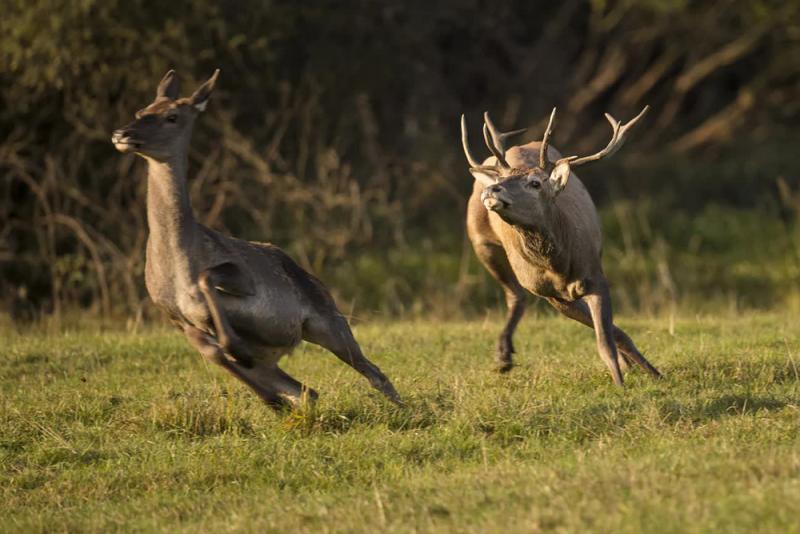Mastering Trail Camera Settings: Key Insights

Trail camera options might feel overwhelming. What modes exist? When to use them? Explore 10 fascinating features of trail cameras here.
In this article, Andre Rothove—dedicated hunter, outdoor lover, & hunting mentor—discusses key trail camera configurations. Andre, creator of Huntress View, a blog empowering women to embrace hunting & the outdoors, also represents 70MAX Trail Cameras. Andre provides advice on optimal settings & situations where they shine.
10 Essential Trail Camera Features & Usage Tips
Over time, trail camera tech advanced significantly. Today, numerous features fit into a single device! Burst Mode, Timelapse, sound videos, adjustable trigger speeds & more. But what do they mean? What’s the right use case? Below, find ten popular features, learn advanced settings, & discover ideal usage scenarios for each.
1. Photo Mode
A basic option found on all cameras. It captures still animal images, day or night, upon movement detection.
Use Case: Works perfectly for varied uses—hunting, surveillance, or simple enjoyment.
2. Video Mode
Found in most cameras, it records clips triggered by movement. Lengths vary by settings, e.g., 5 or 30 seconds.
Use Case: Ideal for deeper insights beyond photos. Example: during deer rut season, videos with sound reveal buck behavior—grunting, roaming casually, or chasing a doe.
A video clip shot using a trail camera's video setting shows a whitetail buck scraping the ground in a forested area.
3. Smart IR Video
This option keeps recording during daylight as long as movement is detected. When motion stops, the video ends at the preset time selected in the menu.
Use Case: Perfect for observing animals staying longer than the set video length. Also ideal for surveillance. For instance, if your camera records 10-second clips every minute & someone is trespassing, they’ll likely stay within the camera’s range longer than 10 seconds. Instead of waiting a minute for another clip, Smart IR Video continues recording. This increases chances of capturing identifying details about the intruder compared to regular video mode.
4. Timelapse & Timelapse+ Feature
Timelapse allows capturing images at set intervals throughout the day, regardless of movement. For example, if set to take a photo every 10 seconds, it captures consistently during daylight hours. These photos can be viewed as a chronological sequence, resembling a video, using software provided by the trail camera brand.
70MAX Trail Cameras also features Timelapse+ Mode. This works like standard Timelapse but adds image capture whenever something crosses the detection zone, mimicking normal photo mode.
Use Case: Ideal for monitoring broad areas like open fields. This mode helps catch images of animals outside the detection zone, offering insights otherwise missed. Especially useful for deer hunters deciding on tree stand placement, game camera positioning, or blind setup.
Trail camera photo shows whitetail deer grazing in a field. A trail camera captures a summer gathering of bucks around a Redmond Trophy Rock.
5. Burst Mode
A photo mode variation taking multiple images upon activation instead of one. For instance, 70MAX Trail Cameras’ “Rapid Fire” feature captures up to 8 images (user-defined) when triggered, instead of just one.
Use Case: Excellent for spots where animals move quickly through the detection zone. Multiple images provide better data. However, not recommended for areas where animals linger, like feeding zones, as this could result in unnecessary repetitive images.
A 70MAX trail camera captures a wood duck landing on a pond log. Still image of a duck taken by a 70MAX camera in Burst Mode.
6. SD Card Management
The SD Card Management option on 70MAX Trail Cameras allows automatic overwriting of older images or videos when the card reaches capacity. This ensures the newest footage always remains available. If disabled, the camera stops recording once the SD card is full.
Use Case: Essential for hunters who might not check or swap SD cards frequently. Enabling this keeps recent images & videos intact, providing up-to-date insights into animal patterns & behaviors.
7. Adjustable Trigger Speed
This setting lets you modify the trigger speed of your camera within a preset range. For example, the 70MAX F8 trail camera offers adjustment between 0.1 & 0.7 seconds.
Use Case: Ultra-fast trigger speed isn’t always necessary for quality images. Consider your camera’s location when deciding. For instance, slower speeds like 0.7 seconds work better near scrapes, minerals, or food sites where animals move slower. For faster-moving targets in the detection zone, opt for a quicker 0.1-second speed.
Image of a whitetail buck in velvet visiting a mineral site captured by a game camera. A Redmond Trophy Rock appears in the scene.
8. Adjustable Detection Ranges
Some cameras provide adjustable detection ranges, extending reach to capture distant wildlife beyond the default zone.
Use Case: Extended ranges work well in open fields or expansive areas. For dense woods, shorter detection ranges perform better for capturing nearby activity.
9. Adjustable IR Flash
Most 70MAX Trail Cameras feature two IR flash modes: Power Save & Long Range. These modes let you tailor flash settings to match the camera’s environment. Power Save produces a dimmer flash, suitable for closer ranges. Long Range extends flash reach for open areas.
Use Case: In wooded environments, Power Save mode is effective due to the limited area being monitored. For fields or expansive views, Long Range mode enhances visibility across greater distances.
10. Capture Timer
This setting enables the user, while in Photo or Video Mode, to define a start & stop time for the camera's operation. This controls the period when the camera will trigger to capture images or videos.
Use Case: A common scenario for turkey hunters—turkeys roost at night, so you won't capture any nighttime images. In this case, set the camera to start capturing images/videos at a specific morning time & stop at a selected evening time. This feature conserves both battery & SD card space.
Example image taken using Capture Mode on a trail camera. A male wild turkey struts & displays his tail in front of the camera.
Additional Cellular Trail Camera Features
Cellular trail cameras have gained popularity & offer a few unique settings, besides those mentioned above, worth knowing. For example, the 70MAX Defender Wireless cellular camera includes an app that lets you control camera settings directly through your smartphone. Most settings listed earlier can be controlled via this app, along with some additional settings that manage how & when to view your camera’s captured content.
1. Camera Sync Schedule
This feature allows you to select specific times when your cellular camera sends images or videos to your phone. You can choose up to eight different times to receive content through the Strike Force Wireless app.
2. Thumbnail Upload
This feature gives you the choice to receive images/videos based on the schedule you set in the "Camera Sync Schedule" or receive them "immediately." Choosing "immediately" ensures your images/videos are sent in real time.
3. Categories
A useful feature for organizing images, where you can create categories like "Whitetail," "Turkeys," etc. Once set up, you can assign images to corresponding categories, keeping your gallery organized as desired.
With the constant technological advancements in trail camera features, it can be overwhelming to decide which settings to use in each situation. I hope the details provided help you choose the right features when setting up your next trail camera, no matter what scenario you are preparing for!







Comments